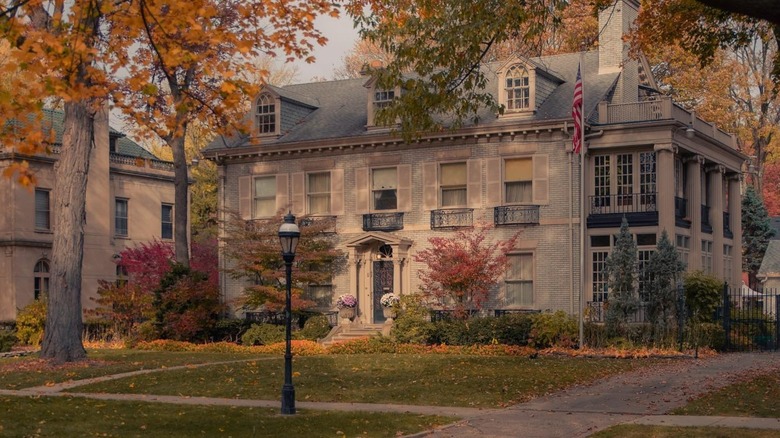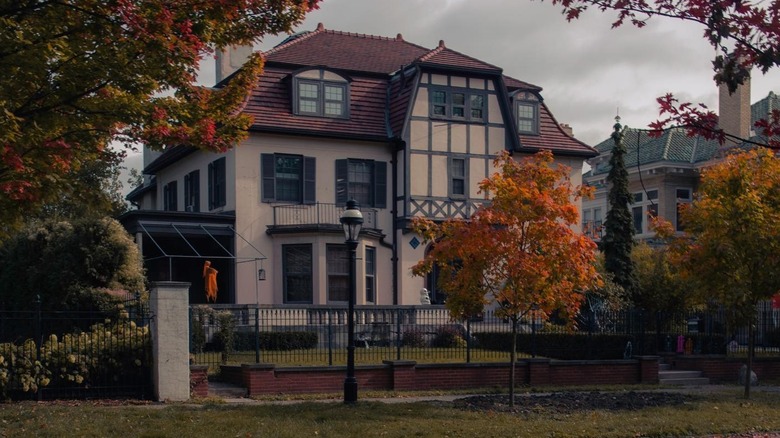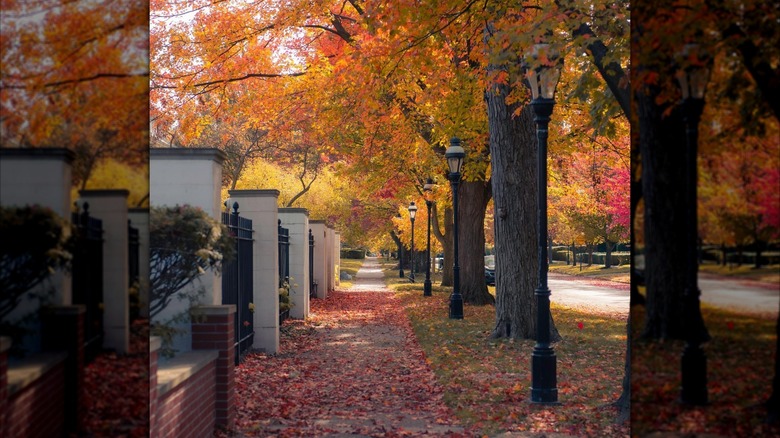
Just a few miles from downtown is one of Detroit's oldest neighborhoods, filled with historic buildings that have become a time capsule of the city's past. Indian Village is a small area in East Detroit comprising just three streets bordered by the Detroit River, but it's packed with history and character. While the neighborhood was added to the National Register of Historic Places in 1972, its stunning houses reflect an earlier time, specifically the early 1900s. Some of Detroit's titans of industry
built homes here, while some of the city's most renowned architects designed buildings in Indian Village that still stand today.
Although some of these homes were going to ruin in the later years of the 20th century, the residents of Indian Village turned their beloved neighborhood into a labor of love, working tirelessly to preserve these one-of-a-kind structures. These days, this historic area is being rediscovered as one of Detroit's most charming locations. The best way to explore Indian Village is to stroll its pleasant sycamore-lined streets, meeting the locals and taking in the neighborhood's range of 17 architectural styles that span from Craftsman to neo-Tudor.
Read more: The Most Charming Cobblestone Streets In America That Will Take You Back In Time
A Historic Neighborhood Of Detroit's Most Historic Figures

While it's easy to assume that Native Americans once lived in this area, the name "Indian Village" actually comes from its streets: Seminole, Iroquois, and Seneca, an adjacent street. Indian Village's origins go back to the 18th century, when it was a ribbon farm or a small strip of farmland off of a waterway. It was developed into a residential area in the 1890s, and it quickly became a go-to location for some of the city's most prominent figures. Today, you can see the house of Henry Ford's son, Edsel: the Scripps Mansion, a 1916 gem built by the family that founded "The Detroit News." You can also see the Seminole Street residence of Henry Leland, founder of Lincoln and Cadillac. The neighborhood has 352 homes total, nearly all dating back to the late 19th and early 20th centuries.
Unsurprisingly, these homes are difficult and costly to maintain, thanks to features like thatched roofs with wooden shingles, so you'll see a mix of well-preserved buildings and ones in serious need of repair. Long-lost features like ballrooms, carriage houses, and turrets are par for the course in Indian Village, making this a must-visit destination for both history and architecture lovers.
A number of homes were designed by Albert Kahn, known as the "father of modern factory design" according to One Detroit, thanks to his work building Ford's factories. Some of Kahn's earliest projects are Indian Village homes, and you'll also find buildings by Louis Kamper, the visionary behind the Book-Cadillac Hotel in downtown Detroit and a number of other buildings in the city.
What Is There To Do In Indian Village?

The main draw of Indian Village is its history, which its close-knit community works hard to protect. So while you might find it hard to stay here — zoning laws prohibit Airbnbs — there are other ways to immerse yourself in the neighborhood's history and charm. One of the best options is to join the annual home and garden tour, which takes place the second weekend in June. Led by the Historic Indian Village Association along with the Indian Village Women's and Men's Garden Clubs, this multi-day event allows visitors to see the interiors of six homes, the private school, and local churches and gardens while learning about the neighborhood's storied past. A yard sale and holiday home tour take place in September and December, respectively, which are also great ways to experience Indian Village and meet its residents.
If you go for an open house or tour, be sure to check out the Centennial Garden, a serene Victorian-style oasis that opened in 1995. You do need a key to enter, so most of the year, this beautiful garden is closed to tourists. Also included in the tours is the Detroit Waldorf School, one of the oldest Waldorf schools in the U.S., which was designed by Albert Kahn. Ultimately, while the stunning homes may be the main draw for visitors, it's really the residents who give Indian Village its heart and preserve its character. A great way to get an in-depth look at this historic neighborhood is to check out the Historic Indian Village Association, which hosts events and offers information to anyone who wants to learn more about this fantastic district in the vibrant center of Detroit.
Ready to discover more hidden gems and expert travel tips? Subscribe to our free newsletter for access to the world's best-kept travel secrets.
Read the original article on Islands.














